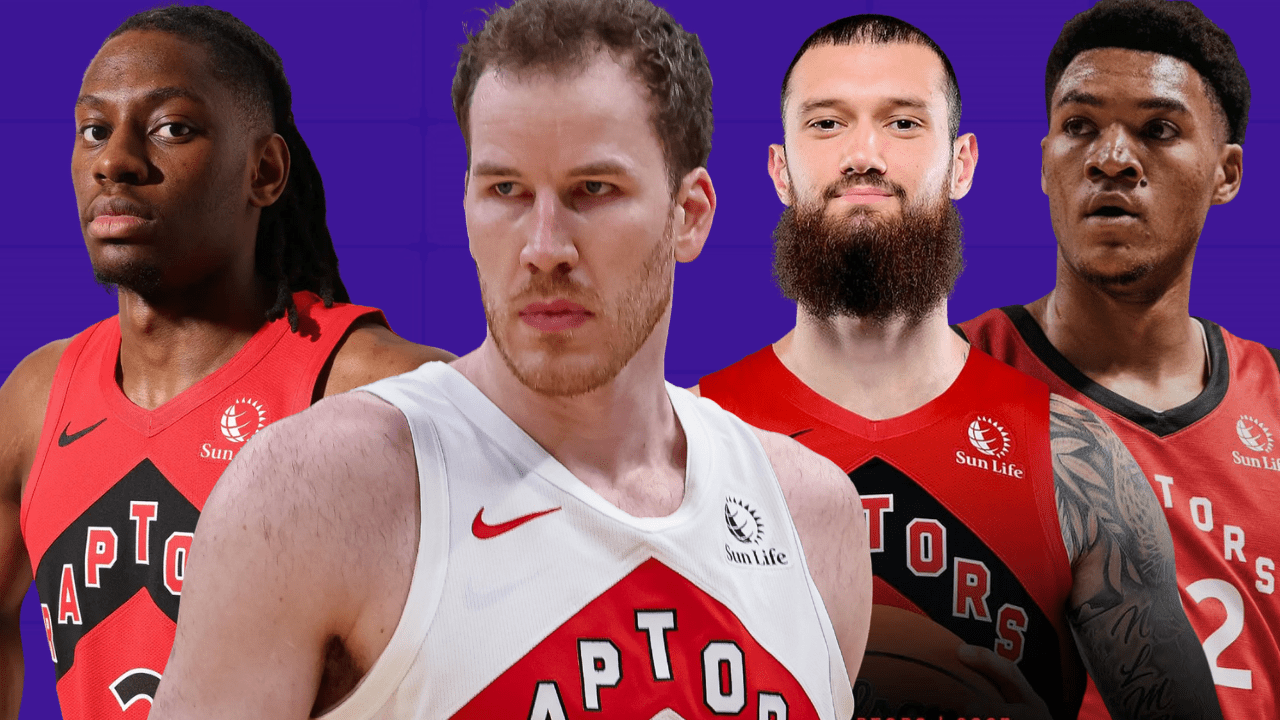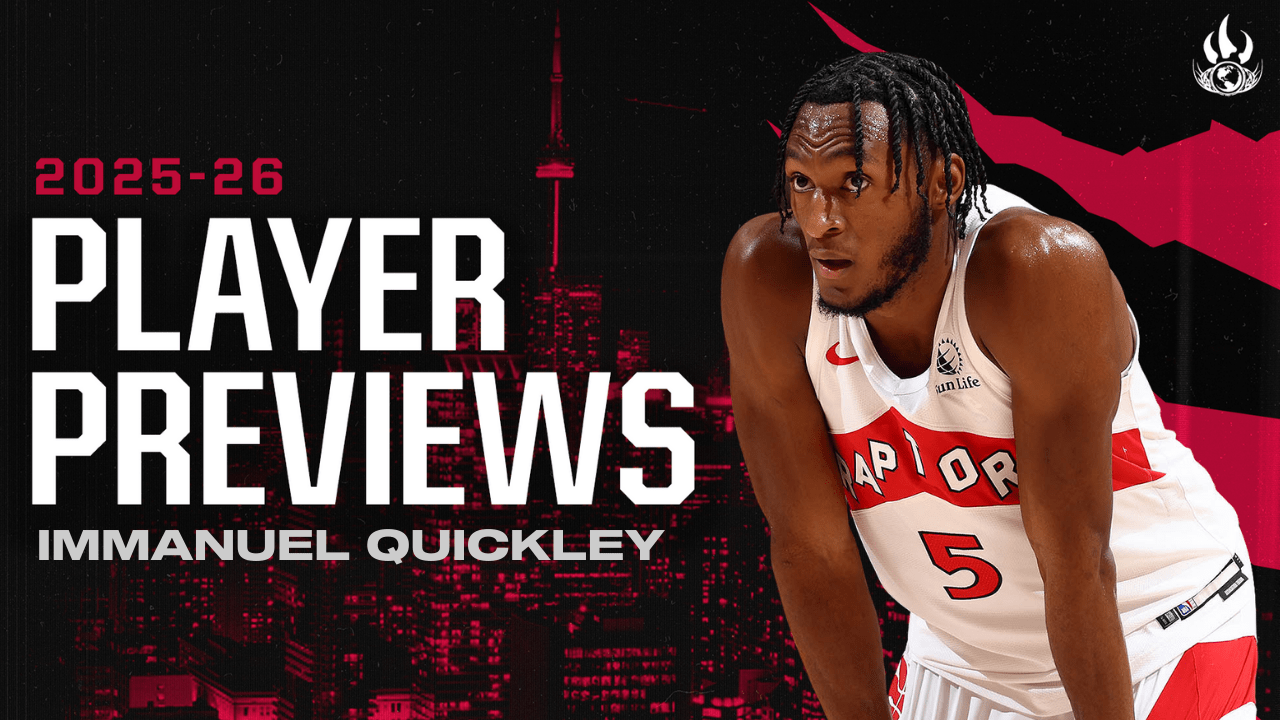This is a part of an off-season series by Esfandiar Baraheni, breaking down one skill for each Raptor heading into the 2025-2026 season that could change their career. Check out the video below.
They say you’re only as strong as your weakest link, and that is undoubtedly true in the NBA. Teams are sophisticated enough to poke and prod at an opposing team’s weaknesses, egging them on to find some sort of solution to the problem. That’s why versatility reigns supreme. A team needs options to turn to when specific situations arise.
The Raptors’ weakest link is their big man position. While Jakob Poeltl is a sturdy and important force on this team — a player whose absence is felt profoundly when he’s off the floor — the rest of the group behind him is hypothetical, at best.
Even Poeltl isn’t perfect. For a team that lacks shooting to have a non-shooting big man as their starting center is testing the limits of what functional spacing looks like on an NBA court. And while that might be overstated, specifically because of Poeltl’s utility as a passer and short-roll creator, it’s still a hurdle the Raptors will have to come across; a weakness they’ll have to address. Or paper over.
Keep in mind that last season, the Raptors were nearly 10 points per 100 possessions worse when Poeltl was off the floor. He is essential to everything they want to do. However, it also reveals a great deal about their limited options.
Now to the platoon behind him for this upcoming season.
Jonathan Mobgo, Sandro Mamukelashvili, and perhaps Ulrich Chomche will serve as the Raptors’ big man bullpen, and how useful they are can prove to be a massive swing.
Let’s start with Mogbo.
The second year big was one of the most versatile defenders in his rookie class last season. Consider this: He had over 240 possessions switching out onto pick-and-roll ballhandlers last season and ranked in the 97th percentile in terms of points allowed. His foot speed, length, and size are everything you want in a switch-big. While fouls held him back (he was fourth on the team), he generally won his minutes defensively last season and fits the build the Raptors want to achieve in terms of ball pressure and chaos.
Offensively, Mogbo is still a work in progress. His touch was negligible. He shot 54% at the rim, 38% on layups last season, and just 32% on floaters. That aspect of his game will have to improve if he wants to serve as a roll-man for this team and for him to have utility in and around the basket. That’s especially important because that’s mostly what Mogbo will be designated to do next season, likely playing in lineups that will relegate him to patrolling the dunker spot.
Still, Mogbo was pound-for-pound one of the best offensive rebounders in the NBA last season. The Raptors were typically a team that relied on second-chance opportunities to muster up more points, and Mogbo did some heavy-lifting in that department.
That said, Mogbo’s lack of actual size is what’s holding him back. The Raptors list him at 6’9, but he measured at 6-foot-6 and a half at the draft combine, and you can tell when watching him on the floor. Even for all of his defensive acumen, his lack of size hurts him in the post, guarding bigger players who can just shoot over top of him.
However, the questions surrounding Mogbo this season will center on his offensive utility, which relies solely on how much he improves at finishing at the basket.
That said, the Raptors’ other big man option, Mamu, provides tons of offensive intrigue.
Mamu measured at 6-foot-9 at the draft combine and is about 6-foot-10 in shoes. He’s bigger than Mogbo, but the difference is that he plays a more perimeter-oriented game. He shot 38% from three across 61 games for the Spurs last season and should, at the very least, allow the Raptors to play five-out in some lineups.
Mamu is also adept at putting the ball on the floor, attacking closeouts, and was one of the best spot-up players in the NBA last season due to this quality. He really understands the nuances of the game and knows how to attack a titled defense, which should bode well in Darko Rajakovic’s offensive system.
But Mamu isn’t the defender that Mogbo is. While he graded out as a solid pick-and-roll defender last season, when you watch the tape, he does make some poor decisions and falls asleep at times off the ball. And despite being bigger, he’s still not big enough to make any meaningful impact at defending the rim.
So the Raptors are in quite a pickle. Their two likely backup big options are inverse versions of each other.
But maybe this does actually provide them with some versatility. The Raptors can play matchup-dependent basketball. If the team they’re facing requires a swiss-army knife defender like Mogbo, then they lean on him more. If they’re facing a team that struggles against a five-out look, then maybe Mamu gets more minutes that night.
Perhaps there’s a world where they can play them alongside one another as part of their bench lineups, leaning on their distinct qualities to mesh together to form a formidable, if not chaotic, frontcourt. A new age version of the Precious Achiuwa-Chris Boucher lineups (and I’m only half kidding).
The Raptors will need to get creative to find the right combination, but if you squint, you can see a world where they play some very unique basketball once Poeltl subs off.
And still, even despite that, their two primary backup options are small. The Raptors yearn for a traditional shot-blocking, rim-running center. Something even Poeltl can’t do.
That’s why the Chomche-Connundrum is so intriguing this season.
It’s unlikely that the 19-year-old Cameroonian big man plays much this season for the Raptors. They will likely bring him along slowly and allow him to work on his game with the 905 again — especially since the main club has intentions of playing winning basketball.
But walk with me for a second.
Chomche is a legit 7-footer and was near the top of the G League in blocks last season. He showcased his improved feel for the game in the Vegas Summer League and was one of the main standouts on the team. His sheer size helps him make an immediate impact on the defensive end, even if his offensive touch is currently a work in progress.
It would be delusional to expect him to be a rotation player, but maybe he becomes a ‘break in case of emergency’ option to go to for spot minutes every few games. A player who can spend the bulk of his time in the G League fine-tuning the tertiary areas of his game and be called up every now and then when the Raptors need some extra size. An innings eater.
It’s something worth thinking about because his immense potential also comes at an opportune time, where the Raptors are sorely lacking at his position.
But back to the main question: Are the Raptors truly versatile? Is their weakest link strong enough?
Truthfully, that remains to be seen.
Versatility in the modern NBA isn’t a ‘one size fits all’ equation. What works for some teams might not for others. But it does ring true that you are only as versatile as your weakest link.
At the very least, the Raptors have more options to go to than they did last year in that area, and that’s a step in the right direction.



